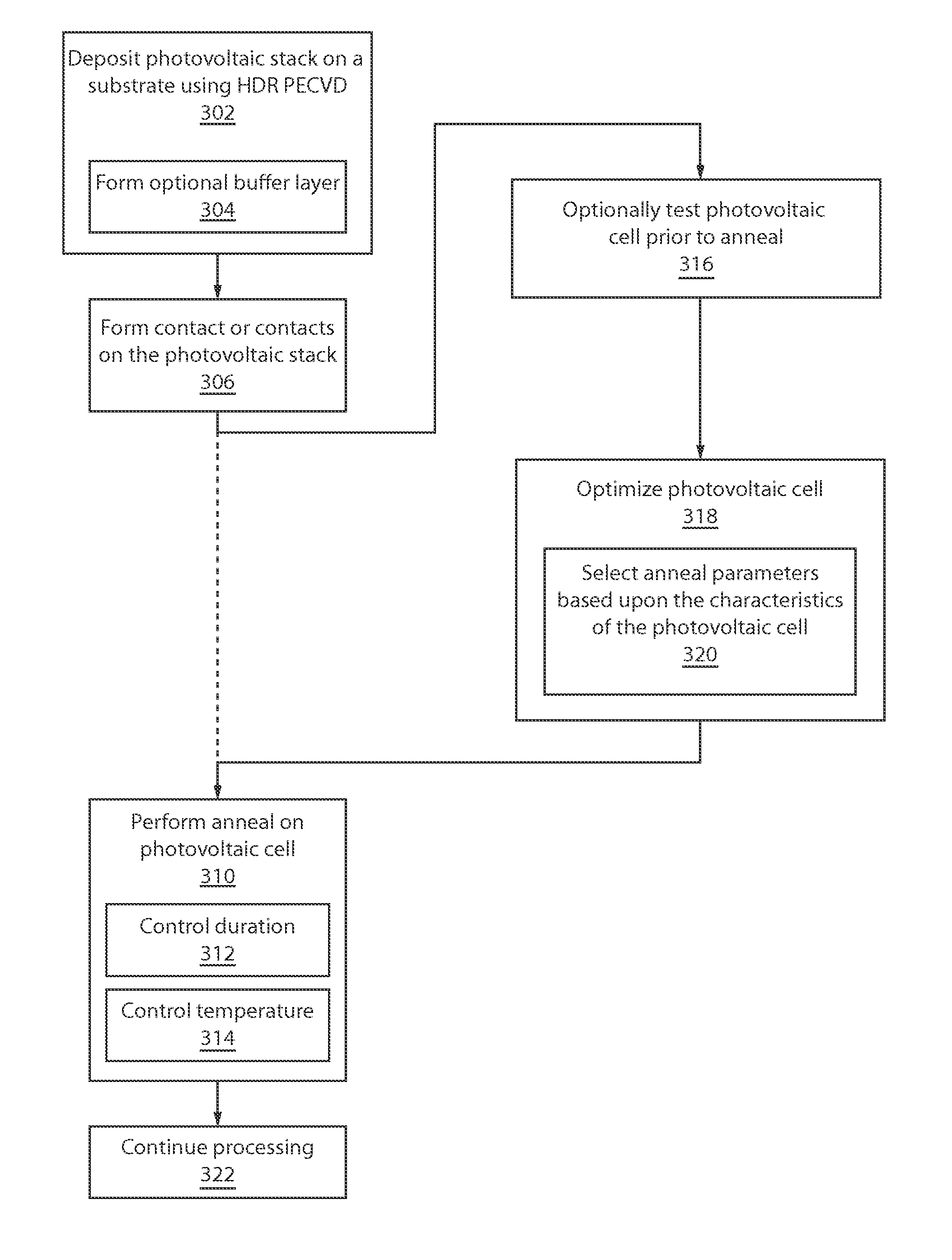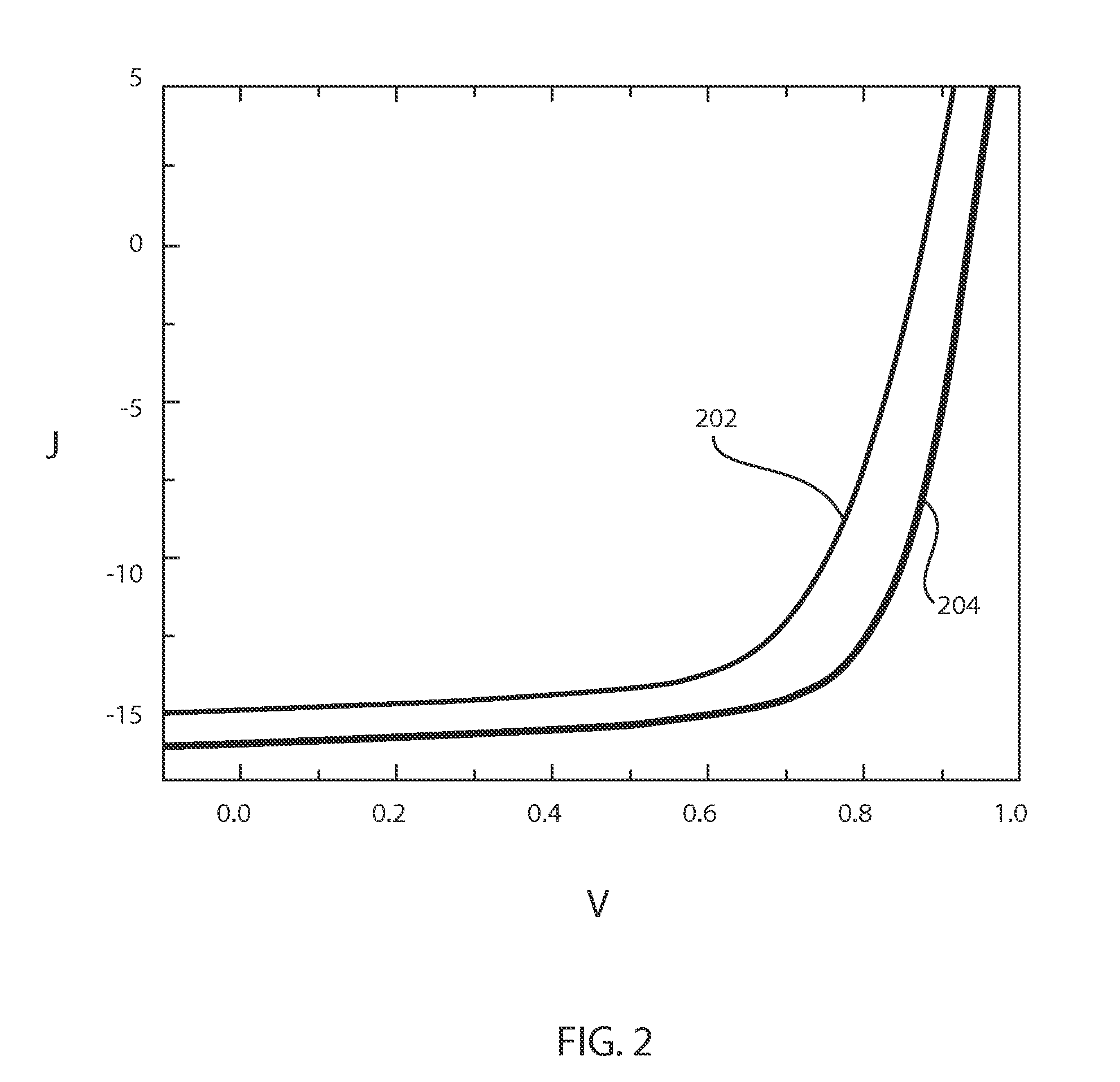High efficiency solar cells fabricated by inexpensive PECVD
a solar cell, low-cost technology, applied in the field of photovoltaic devices and methods for fabrication, can solve the problems of low productivity, achieve the effects of improving overall performance, high deposition rate, and enhancing chemical vapor deposition
- Summary
- Abstract
- Description
- Claims
- Application Information
AI Technical Summary
Benefits of technology
Problems solved by technology
Method used
Image
Examples
Embodiment Construction
[0016]In accordance with the present principles, methods and devices are presented that provide improved efficiency to photovoltaic cells fabricated with high deposition rate and high throughput processes. Layers for semiconductor devices are often deposited using low deposition energies. Low deposition energies are favored by manufacturing since the low energy permits high quality a-Si:H layer deposition and less energy usage. Designers also prefer low deposition energies since the low energies create plasma with less energy bombardment on a surface resulting in less damage to existing structures on semiconductor devices. In thin film Si solar cell applications, high deposition energies are desired for depositing a p+ layer since the higher energies increase the likelihood that a microcrystalline phase will form. The microcrystalline phase can reduce barrier heights between the p+ layer and an electrode (e.g., formed from a transparent conductive oxide (TCO)).
[0017]For example, pho...
PUM
 Login to View More
Login to View More Abstract
Description
Claims
Application Information
 Login to View More
Login to View More - R&D
- Intellectual Property
- Life Sciences
- Materials
- Tech Scout
- Unparalleled Data Quality
- Higher Quality Content
- 60% Fewer Hallucinations
Browse by: Latest US Patents, China's latest patents, Technical Efficacy Thesaurus, Application Domain, Technology Topic, Popular Technical Reports.
© 2025 PatSnap. All rights reserved.Legal|Privacy policy|Modern Slavery Act Transparency Statement|Sitemap|About US| Contact US: help@patsnap.com



